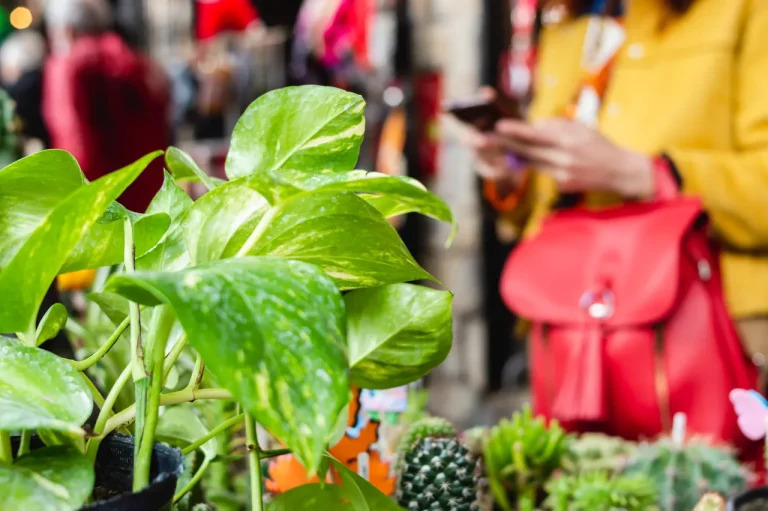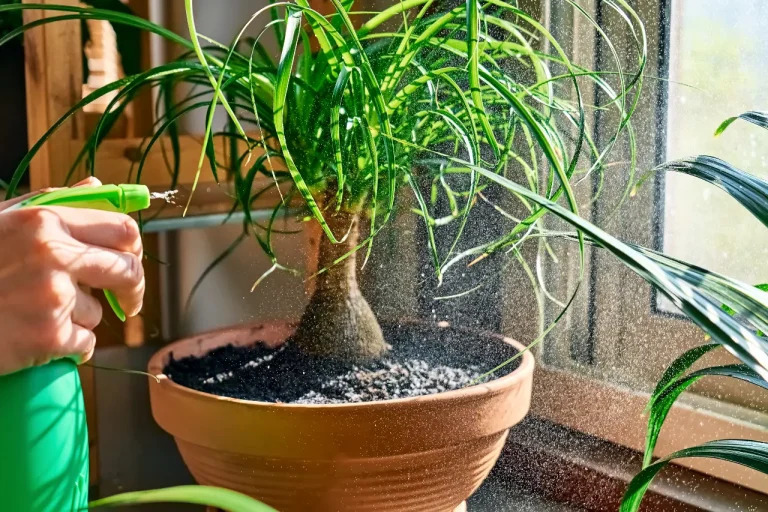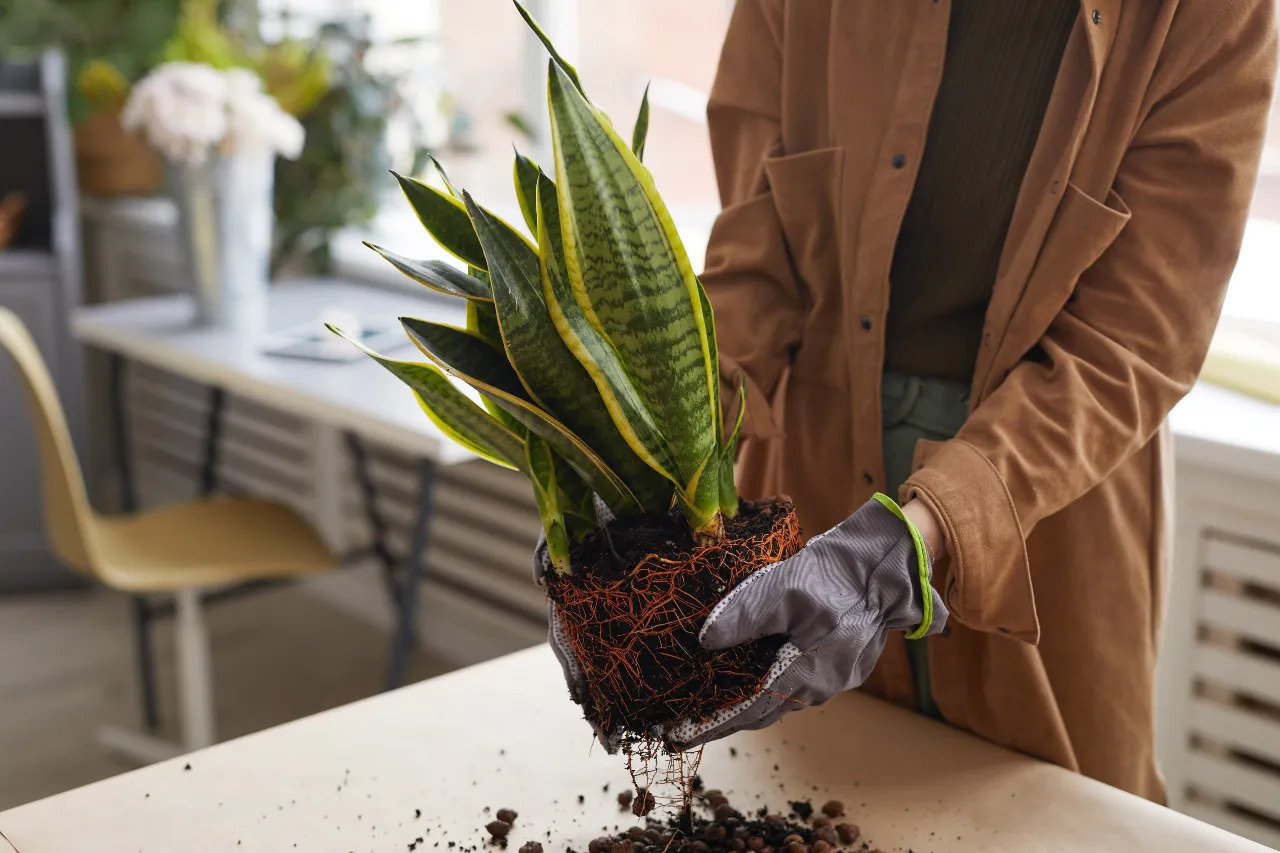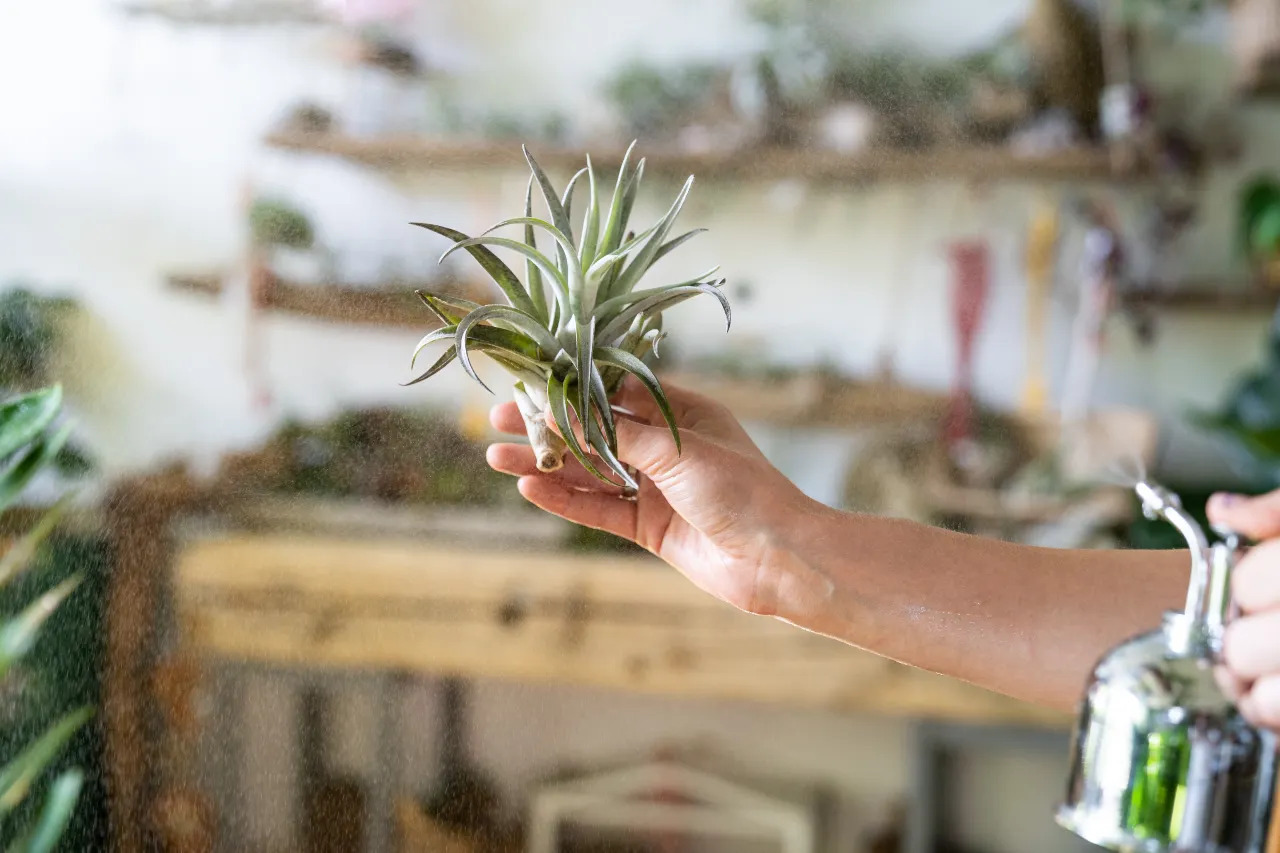Beginner Plant Care: How to Care for Houseplants and Thrive as a New Plant Parent
Nov 11th 2024
Estimated reading time: 10 minutes
Embarking on the houseplant journey as a new plant parent can be exciting and daunting, especially with the myriad of indoor gardening tips and houseplant essentials available to guide you. However, with the right beginner plant care knowledge and a well-rounded plant parent starter pack, you can transform your home into a thriving green oasis. Understanding how to care for houseplants involves more than just watering; it requires a commitment to learning about each plant’s unique needs, from light and soil requirements to humidity and temperature preferences. This guide aims to equip you with the foundational knowledge necessary to nurture healthy houseplants, ensuring your indoor garden flourishes as you gain confidence and expertise in “the art” of plant care.
Beginner Plant Care Basics
Pothos

Pothos is an ideal choice for new plant parents due to its hardy nature and adaptability to various light levels, making it a key addition to your plant parent starter pack. Its trailing vines and heart-shaped leaves bring a touch of nature indoors, enhancing aesthetic appeal. While Pothos doesn’t thrive in direct sunlight all day, it can adjust to low-light conditions, which suits most home environments. For those exploring beginner plant care, Pothos offers the added benefit of easy propagation. Simply cut a section of the vine and place it in water. The roots will develop after a few weeks, allowing you to expand your indoor garden effortlessly. This characteristic, combined with its rapid growth, makes Pothos a rewarding plant for novices. Remember to let the soil dry between waterings to prevent root rot, ensuring your Pothos stays healthy on your houseplant journey.
Ponytail Palm

The Ponytail Palm is a unique and resilient choice for new plant enthusiasts, offering both visual appeal and ease of care. Despite its name, this plant is not a true palm but a type of succulent, characterized by its striking bulbous trunk and long, arching leaves resembling a ponytail. This structure allows it to store water efficiently, making it highly drought-tolerant and an excellent fit for those still learning how to care for houseplants. The Ponytail Palm thrives in direct sunlight, so placing it near a bright window is ideal. It prefers its soil to dry out completely between waterings, which aligns with its natural growth habits. This slow-growing plant also adapts well to indoor conditions, making it a low-maintenance addition to your houseplant journey. By incorporating a Ponytail Palm into your home, you gain a visually captivating plant that requires minimal effort, encouraging further exploration of indoor gardening tips.
Snake Plant

The Snake Plant, also known as Sansevieria, is a staple for new plant parents due to its remarkable adaptability and minimal care requirements. Recognized by its upright, sword-like leaves, the Snake Plant can withstand a wide range of indoor environments, from bright indirect light to low-light corners. This resilience makes it an excellent choice for those beginning their plant parent journey. An essential aspect of beginner plant care with Snake Plants is understanding its watering needs; overwatering can lead to root rot. In low light, watering every 4-6 weeks is sufficient, while brighter conditions may require watering every 2-4 weeks. Always check that the soil is completely dry before rewatering. The Snake Plant’s air-purifying abilities further enhance its appeal, contributing to a healthier indoor atmosphere. By adding a Snake Plant to your home, you gain both a hardy plant and a natural air purifier, embodying essential houseplant care principles.
Air Plants

Air Plants, or Tillandsia, are an intriguing choice for beginners due to their soil-free nature and minimal care needs, making them a fascinating addition to your plant parent starter pack. These epiphytic plants naturally grow on surfaces like tree branches, absorbing moisture and nutrients directly through their leaves. This adaptation allows for versatile display options, such as hanging in decorative holders or resting on shelves. For those exploring how to care for houseplants, Air Plants offer a unique approach; they thrive in bright, indirect light and require occasional soak-watering every 2-4 weeks. Simply submerge them in water for a few hours, then allow them to dry completely before repositioning. This easy maintenance routine highlights their suitability for new plant parents. Air Plants not only add greenery to your space but also introduce an element of botanical curiosity, encouraging further exploration of indoor gardening tips and expanding your houseplant journey with creativity.
How to Care for Houseplants
Plant Care Guides
Plant care guides are invaluable resources for new plant parents, offering tailored information to meet each plant’s unique needs. Each houseplant species has evolved with specific preferences for light, moisture, temperature, and soil, and understanding these can significantly enhance your success. A comprehensive guide will break down these requirements, helping you avoid common pitfalls like overwatering or insufficient light exposure. For instance, while some plants thrive in direct sun, others might require shaded conditions to avoid leaf burn. Regularly consulting a plant care guide can also aid in identifying early signs of distress, allowing for timely interventions. These guides often provide seasonal care tips to adjust watering and feeding routines accordingly. By familiarizing yourself with these resources, you not only enhance your skills in beginner plant care but also ensure your indoor garden continues to thrive, facilitating a rewarding houseplant journey filled with growth and learning.
Arizona Flower Market Plant Care Section
The Arizona Flower Market provides a dedicated plant care section designed to support new and experienced plant enthusiasts alike. This resource-rich environment offers an array of tools and advice essential for nurturing healthy houseplants, making it an integral part of your plant parent starter pack. Whether you’re seeking guidance on specific plant species or general indoor gardening tips, their knowledgeable staff are ready to assist, ensuring you have the information needed to succeed in your houseplant journey. The plant care section includes detailed guides on watering schedules, light requirements, and fertilization techniques, tailored to various plant types. Additionally, Arizona Flower Market supplies a selection of high-quality soil, pots, and other houseplant essentials, providing everything necessary to create a thriving indoor garden. By leveraging these resources, you can cultivate a deeper understanding of how to care for houseplants, ensuring your green space flourishes under your attentive care.
The Plant Know-How Team
The Plant Know-How Team at Arizona Flower Market is composed of seasoned experts dedicated to guiding you through every step of your houseplant journey. Their collective expertise spans various aspects of plant care, ensuring that your questions are met with informed and practical solutions. Whether you are grappling with a plant that isn’t thriving or exploring new plant varieties, the team provides personalized advice tailored to your specific needs. This hands-on support covers a range of topics, from selecting the right houseplant essentials to troubleshooting common care issues. Their commitment to customer education extends beyond in-store interactions, offering valuable insights into long-term plant maintenance strategies. Engaging with the Plant Know-How Team not only enhances your understanding of beginner plant care but also builds your confidence as a plant parent. With their support, you can cultivate a flourishing indoor garden and enjoy the rewarding experience of nurturing healthy, vibrant houseplants.
Essential Plant Care Equipment
Plant Watering Basics
Watering is a fundamental aspect of plant care, and mastering its basics is crucial for maintaining healthy houseplants. The key to effective watering lies in understanding the specific needs of each plant species, as overwatering or underwatering can lead to common issues like root rot or dehydration. To start, always check the moisture level of the soil before watering; this can be done by inserting your finger about an inch into the soil. If it feels dry, it’s time to water. Using a watering can with a narrow spout can help direct water straight to the soil, avoiding unnecessary spillage on leaves or furniture. Ensuring your pot has proper drainage is also essential, as it allows excess water to escape, preventing waterlogged soil. Adjust your watering frequency according to seasonal changes; plants often require more water during growth periods in spring and summer. By adhering to these practices, you’ll enhance your plant parent experience and foster thriving houseplants.
Nutrient Solutions
Nutrient solutions, or fertilizers, play a critical role in the health and growth of houseplants. As plants grow, they deplete the nutrients within their soil, necessitating regular replenishment to sustain vitality and development. Choosing the right nutrient solution depends on the specific needs of your plants. All-purpose fertilizers are an excellent starting point for beginners, providing a balanced mix of essential nutrients like nitrogen, phosphorus, and potassium. These nutrients support fundamental plant functions, including leaf growth, root development, and flowering. Liquid fertilizers are particularly user-friendly, as they can be easily mixed with water and applied during regular watering sessions. It’s important to follow application guidelines to prevent over-fertilization, which can harm plant roots. Seasonal adjustments are also necessary; many plants benefit from a regular feeding schedule during active growth phases in spring and summer, while reducing feeding in the dormant winter months. Proper nutrient management ensures your houseplants remain vibrant and thriving.
Pruning Instruments
Pruning instruments are vital tools for maintaining the health and appearance of your houseplants. Proper pruning encourages growth, removes dead or diseased parts, and helps shape plants to fit your space. Selecting the right tool depends on the plant type and the task at hand. For delicate trimming or small plants, sharp snips or pruning scissors offer precision cuts without damaging surrounding foliage. These tools are ideal for plants like Pothos or Spider Plants, where gentle handling is essential. For larger plants or thicker stems, such as Fiddle-Leaf Figs or Rubber Trees, sturdier pruners or shears provide the necessary cutting strength and control. Keeping your pruning instruments clean and sharp ensures clean cuts, which help prevent infections and promote quicker healing. Regular maintenance of your tools not only extends their lifespan but also enhances your ability to care for your plants effectively, ensuring they remain healthy and lush throughout their growth cycle.
Conclusion
Embarking on your houseplant journey as a new plant parent can be a rewarding and fulfilling endeavor. By understanding the basics of beginner plant care and equipping yourself with essential tools and knowledge, you can create a thriving indoor garden that enhances your living space. From selecting resilient plants like the Snake Plant and Pothos to mastering watering and nutrient management, each step you take builds your confidence and expertise. Resources like plant care guides and expert advice from the Arizona Flower Market Plant Know-How Team further support your growth, offering tailored guidance to suit your specific needs. As you integrate these practices into your routine, you’ll not only nurture healthy houseplants but also cultivate a deeper connection with nature. This ongoing journey provides both personal satisfaction and the joy of watching your plants flourish, making the investment in time and care truly worthwhile. Embrace the experience, and enjoy the green oasis you create.
FAQ
As you delve into the world of houseplant care, it’s natural to encounter questions along the way. Here are some frequently asked questions to help guide you.
How often should I water my plants?
The frequency of watering depends on the plant species, pot size, and environmental conditions. Generally, check the soil moisture and water when the top inch feels dry.
What type of light do my plants need?
Light requirements vary; some plants thrive in bright, indirect light, while others tolerate low-light conditions. Understanding your plant’s specific needs will ensure optimal growth.
How can I tell if my plant needs repotting?
If roots are emerging from the drainage holes or your plant’s growth has stalled, it might be time to repot. Choose a slightly larger pot and fresh soil to encourage healthy development.



